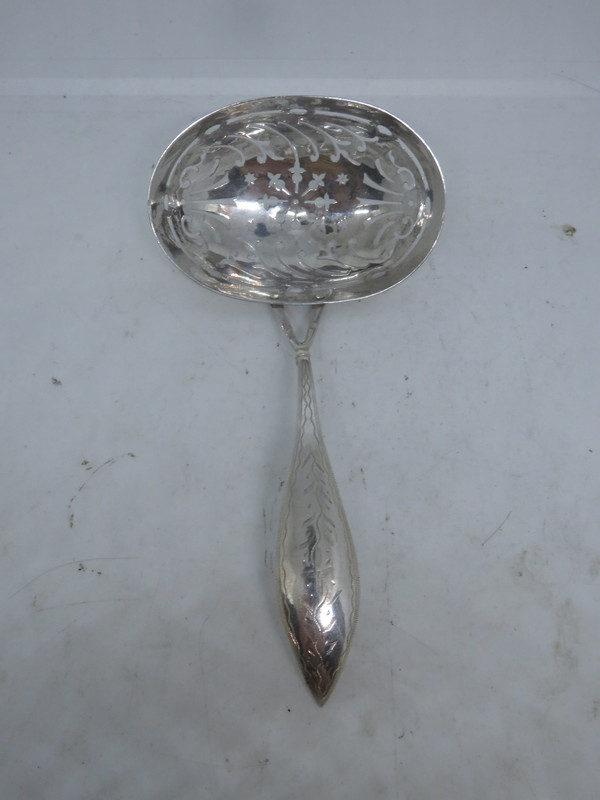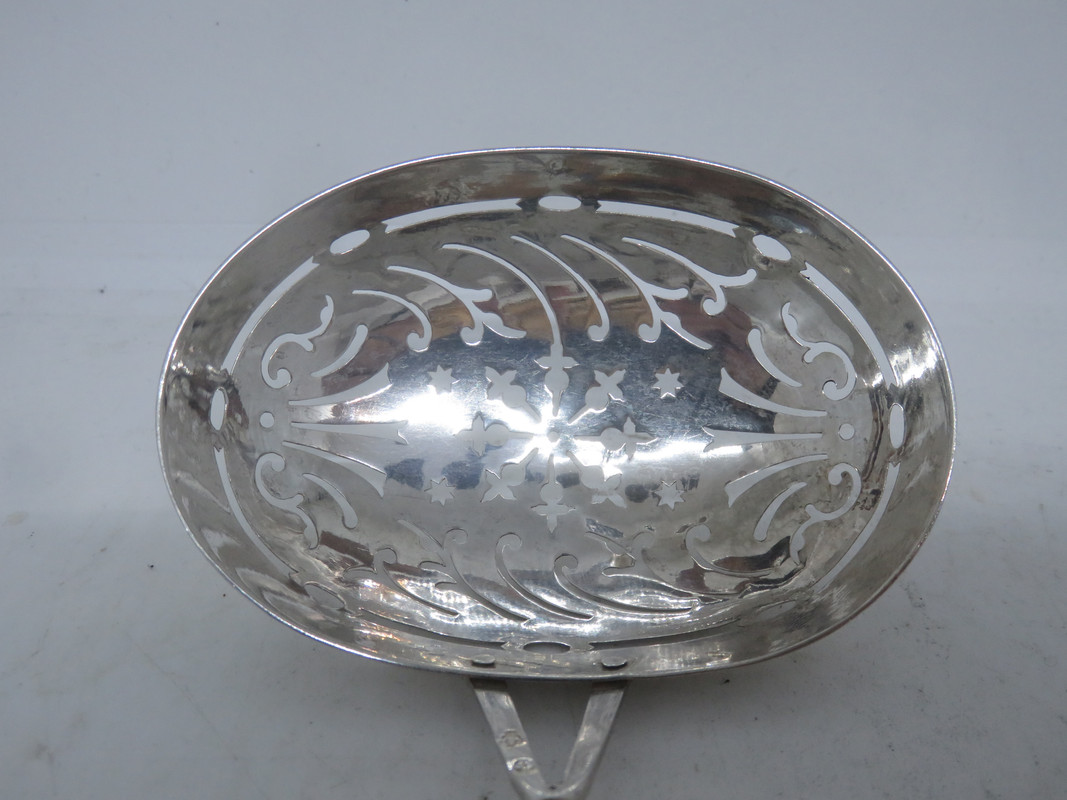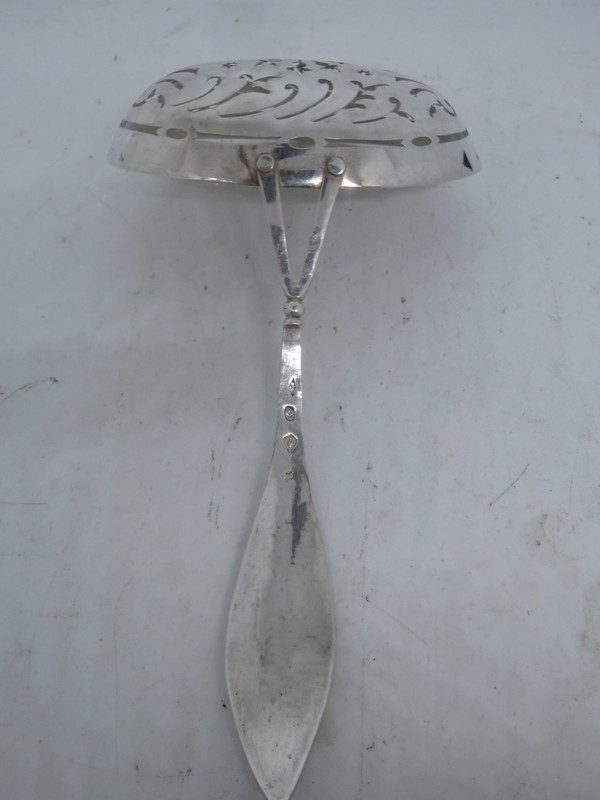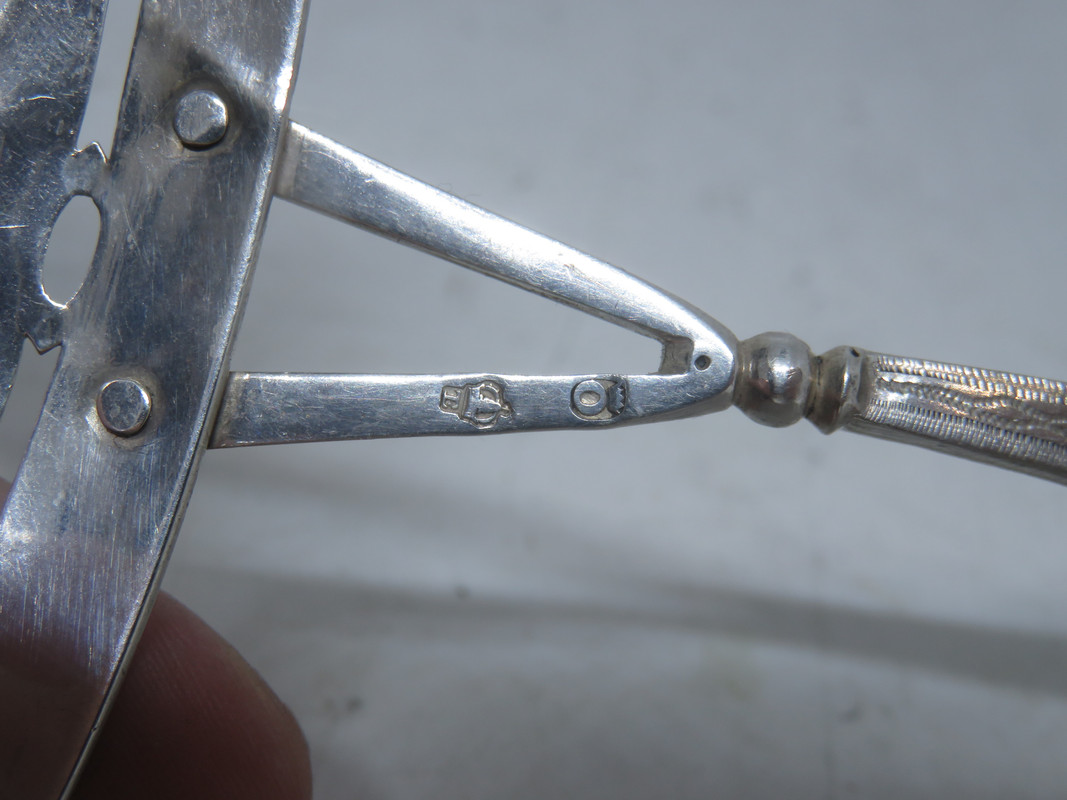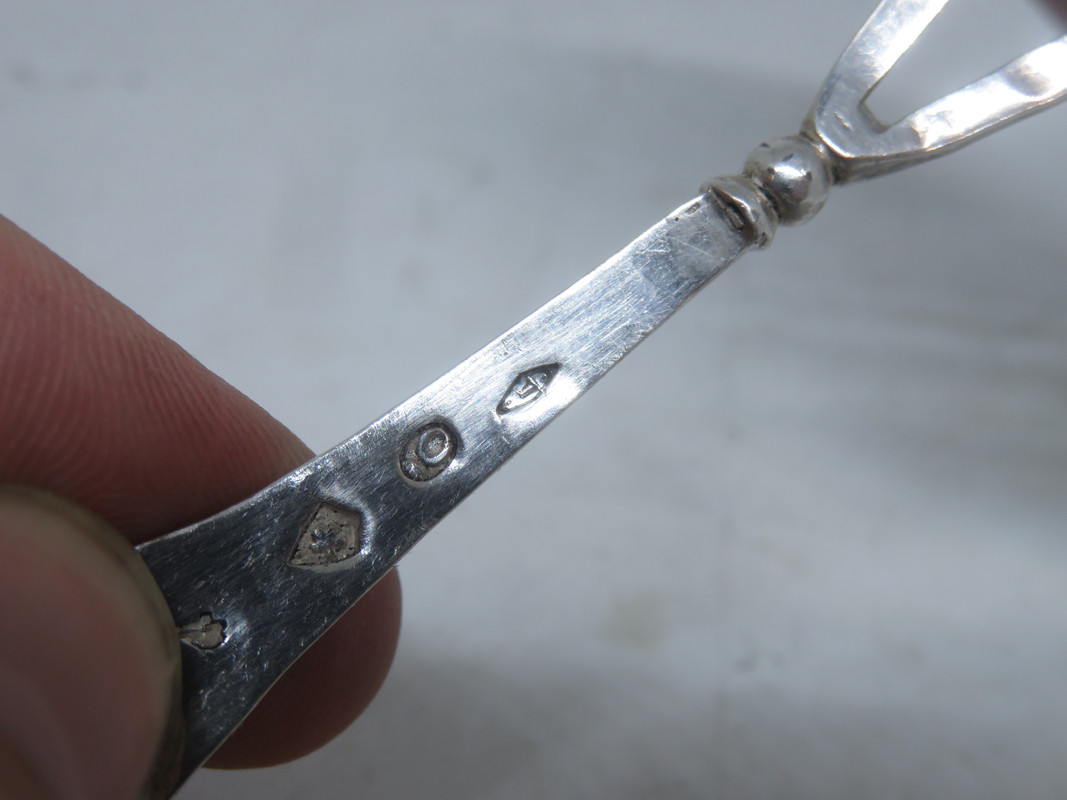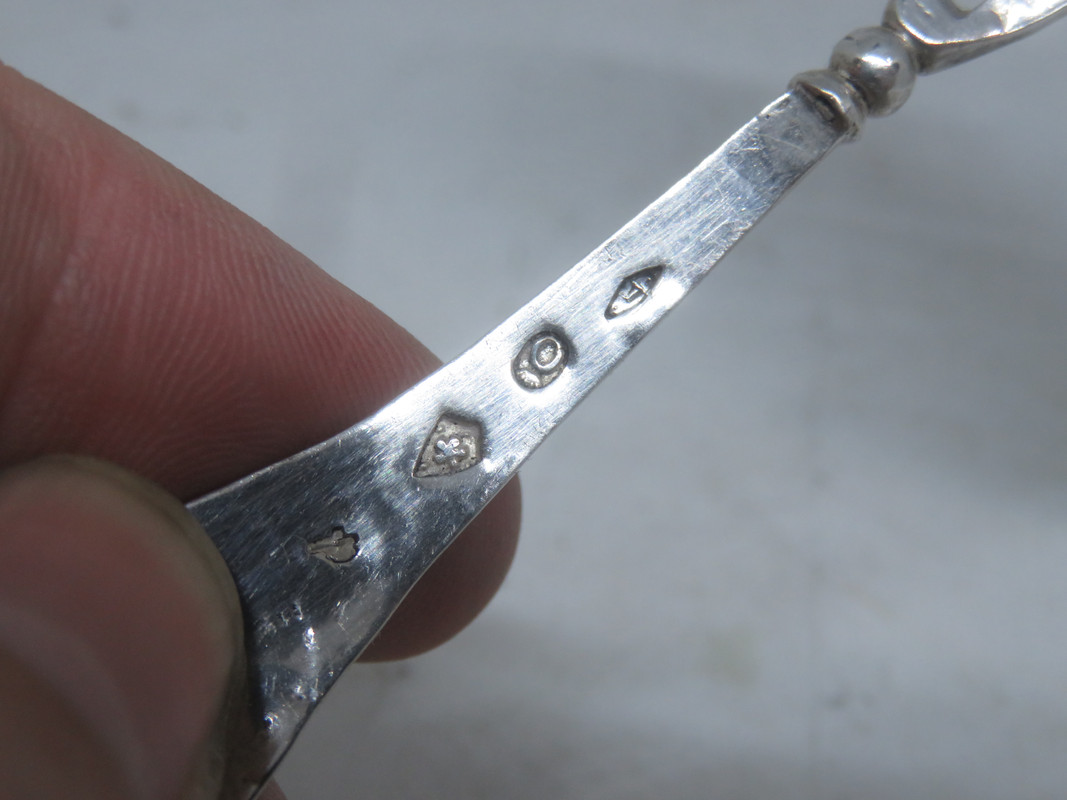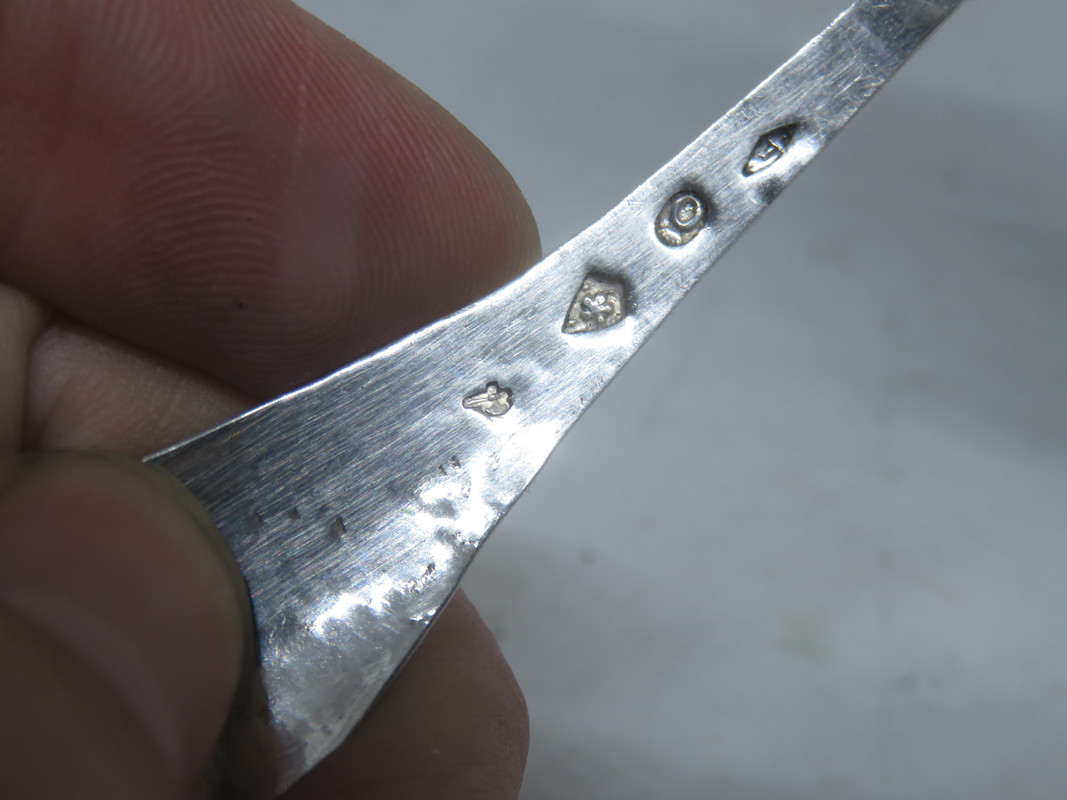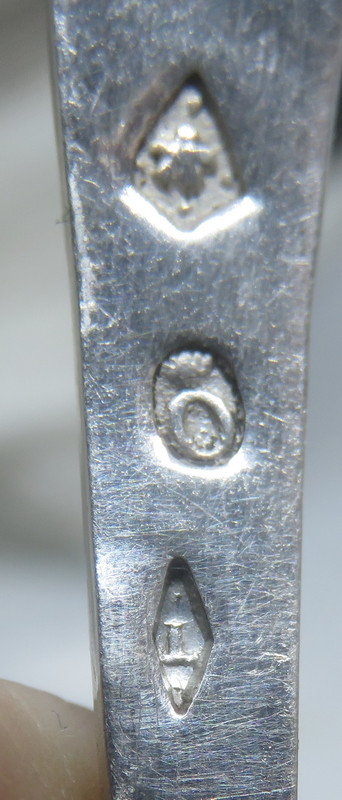Hi Krisztián, your sugar sifter

The hatchet is also a Dutch duty mark
The hatchet, the 1853 duty mark for old silver objects of national origin returned to the trade. In accordance with several resolutions with further clarifications, this mark was intended for objects with the hallmarks of the ancient Netherlands silversmiths companies, of Louis Napoleon's Kingdom of Holland, of the French Republic, of the French Empire until the end of 1813, of Maastricht and Liege 1814-1815, and of the former Southern Netherlands. In accordance with these resolutions even objects with marks which clearly had been struck in France and the present Belgium were to be considered national and thus exempt from import duty and double marking duty. Later it was decided that objects with this hatchet mark were to be considered as equal to guaranteed objects, and were thus permitted to be exposed for sale in the showcases for guaranteed objects. The use of this mark was abolished in 1927 for two reasons: 1st . The lack of knowledge of the old marks has caused this mark to be sometimes struck on old foreign objects. 2nd. this mark had often been counterfeited and used to give objects an antique aura. The difference with the older French hatchet mark: The French mark was struck tax free on objects with valid hallmarks
See;
viewtopic.php?t=32028
The mark
T above and under a
point in a lozenge could be for the Belgian silversmith Arnould François
Tribel, he worked in Brussels 1815-> 1824, born Brussels around 1791, married to Marie Catherine Kerckx.
Does the sifter shows signs of a repair ? The crowned O duty mark is for 1807.
The other mark a stylized flower in shield might be the maker's mark, unknown to me.
Peter.
Source;
Van Dievoet, Walter, Répertoire général des orfèvres et des marques d'orfèvrerie en Belgique /.
Other title: Algemeen repertorium van de edelsmeden en van de merken van edelsmeedwerk in België General index of Belgian goldsmith silversmiths and hallmarks, Allgemeines Verzeichnis der belgischen Gold- und Silberschmiede und der Merkzeichen part II 1798-1942. WaarborgHolland, Gouda 2009, Waarborgholland, ˜Netherlands' Responsibility Marks since 1797.